
The Visual narratives are productions and/or imagistic creations arranged from successive episodes and events with images that integrate. In our immediate culture, one of its greatest features is the production of communications increasingly imagistic and Visual, containing information increasingly accurate and fast. The purpose of this article is to analyze the genre "poem", contained in this work, According to the concepts of Mikhail Bakhtin, as well as the effects of meaning produced by the visual imagery text, theoretical and methodological basis, aspects which favour the rhetoric and image, by Roland Barthes.
The human being has always used the Visual Arts for its communication since the prehistory, named rock art, through paintings, made with pigments, as well as engravings, made with incisions on the rock itself, documenting the first records of an embryonic form of writing, which documented their daily life situations, or exalting their beliefs. Already in the middle ages, the Visual Arts were appropriated by the Catholic Church, that used to serve their interests, concluding that the imagery portrayed the religious world to mainstream concepts in a society almost entirely made up of illiterate (Encyclopaedia Itaú Cultural, Religious Painting). Already in the 15th century, with printed texts from the first mechanical printer, created by Johannes Gutenberg, a new form of communication which would in addition to the drawings and manuscripts, giving the man a written communication through large-scale prints, enabling the diversification of the concept of genre, for Bakhtin ([1979], 2003, p. 261) …. contributing, and, with the theory of developmental psychology (p. 28) and substantial decrease in the number of illiterates.
However, According to Barthes (1984), communication has remained, Since the classicism, through writing and pictures, In addition to books produced only with drawings. In the contemporary era, the drawing/image is as important as in previous eras, mainly by short-term culture and fast which was installed, keeping a communication made new arrangements increasingly imagistic and Visual.
With new media, These communications have gone on to achieve your goals quickly, spreading and/or stating in a very fast and effective, using Visual or imagistic language, included in this work. In this way, to interpret information through drawings/images, requires a larger domain of different areas of knowledge, in order to interpret them according to the cultural universe of design.
For the proper interpretation of drawings/existing images into a work of art, It is necessary to go beyond the obvious and immediate, requiring that penetrates in context and you can analyze them beyond appearances, or its iconographic forms illustrative.
My proposal with this study is to analyse the message of the signs/symbols, Amedeo Modigliani, printed intentionally in his unpublished "Velieri the Livorno", So how did in other authentic works (La Luce Dell'Amore – 1994, p. 117-127 and Modigliani – 1943, p. 56-57 and p. 76-77), plotting the drawing/image with the literature through the poem "Divine Comedy", of Dante Alighieri.
To better understand this story, Let's see: Modigliani was born in 12 th July 1884, in Livorno and dies in 24 January 1920, in Paris and Dante Alighieri is born in 29 May 1265, in Florence and died in 14 September 1321, in Ravenna, therefore, two major Italian artists, Tuscany's natural.
Modigliani was born with his health very committed, What made it impossible for him to be literate in regular schools, getting your mother, Eugenia Garsin and his grandfather Isaac Garsin, of Sephardic Jewish origin, with the responsibility of your literacy that, moreover, occurred at the age of five and the main teaching material, the poetic work "the Divine Comedy", of Dante Alighieri. At the age of 13 years old, Modigliani said of memory, Excerpts of this work.
After having started his studies of painting in 1898, in the Atelier of Guglielmo Micheli, in Livorno and have frequented other studios in several Italian cities, in 1906, Modigliani arrives in Paris to start his studies at Académie Colarossi he snatches the attention of all, on the first day of school, When entering the Studio, says some verses of "the Divine Comedy". It was an unforgettable presentation! After this episode, frequently invited to say this work in cabarets and public squares.
In 1909, with the worsening of his health, as a result of tuberculosis, He had contracted in 1901 and need medical attention, Modigliani returns to Livorno, to treat and take care of his own mother. Probably in this period, He produced the work "the Livorno Velieri" (Fig. 1) and purposely, printed through signs/symbols, some of the 100 corners that make up the structure of poetry "the Divine Comedy", a practice reported by his friend Arthur Pfannstiel (Modigliani – 1943, p. 56-57 and p. 76-77), who narrates the fact that Modigliani had a habit of producing his works, reciting this poem here, as if you were, under the influence of drugs, or owned by Dante Alighieri.
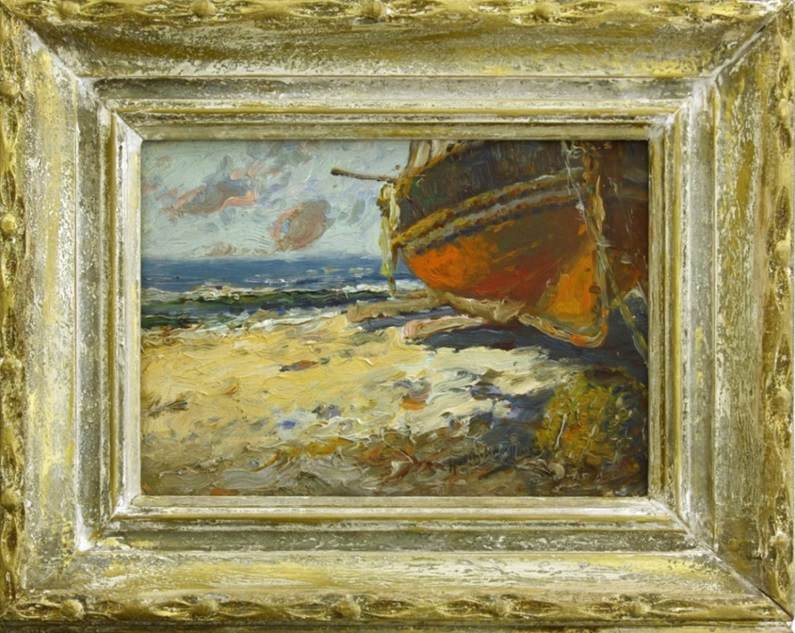
This work, "The Livorno Velieri", was brought to Brazil by the painter paulistano, J.W. R. -José Wasth Rodrigues, Patron of the Brazilian Army documentation center, creator of the coat of arms of the city of São Paulo, Stained glass windows of the Cathedral da Sé, Tiles of the Obelisk from memory, among other works, in 1914, When triggered the first world war. In this period, Wasth Rodrigues was studying in Paris through a grant from the Government of São Paulo, period where he meets Modigliani and ends up rooming and poverty with his friend livornês, second Chronicles of several Brazilian poets, highlighting the good Wasth Rodrigues "of Carlos Drummond de Andrade and" Modigliani "jacket of Paul Banks. Wasth Rodrigues to return to Brazil brings in your luggage, some works presented by Modigliani, According to reports published in 1950, in the newspaper "Correio da Manhã".
The most important proof of this friendship between Wasth Rodrigues and Modigliani, refers to the portrait that Modigliani made, in 1918, your friend paulistano, so far being titled as, "Man sitting and supported on a table", by total lack of information about who would be the character. (Fig. 2).
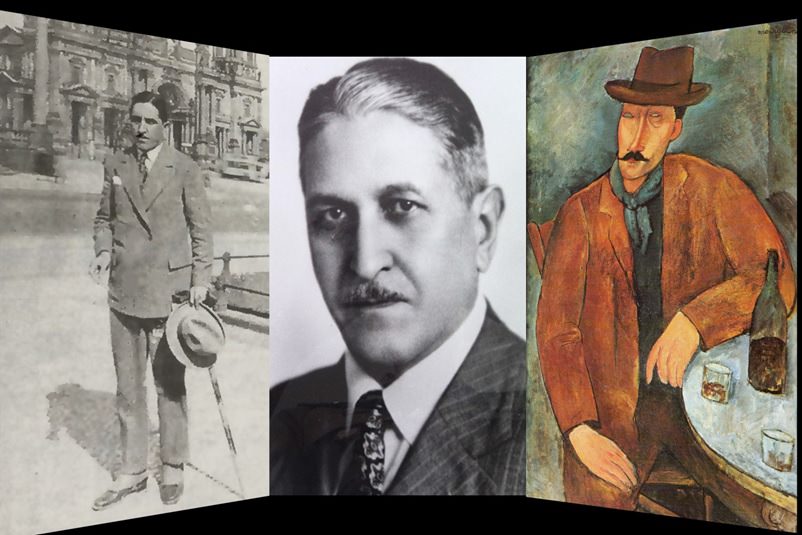
Another curiosity about the friendship between Wasth Rodrigues and Modigliani, is documented with the works, "Portrait of José Wasth Rodrigues”, on the left and the “Self portrait of Modigliani”, to the right of the Figure 3, where the two characters of these works of Modigliani, use the same jacket, the same Scarf, as is set out in several publications, as a gift from Wasth Rodrigues to Modigliani, soon after being pictured in 1918, When Wasth returns to Paris, as cicerone of the writer Monteiro Lobato, year of release of the book, "Urupês", with illustrations by Wasth Rodrigues.
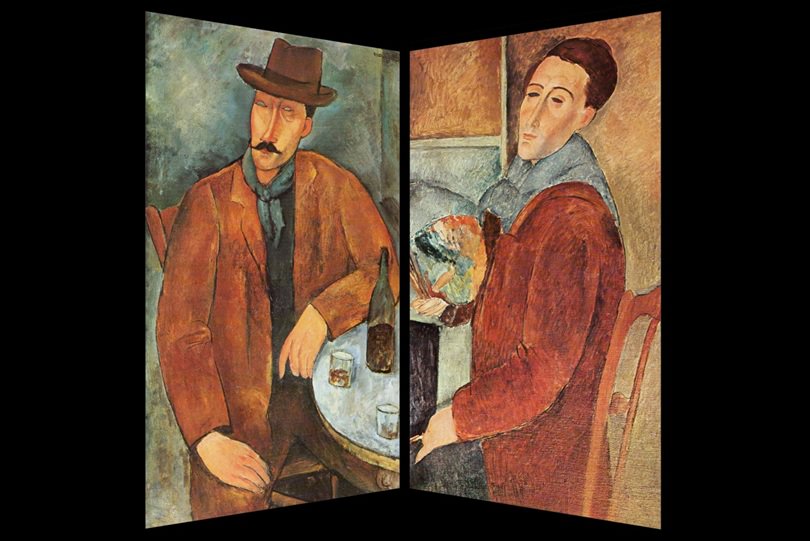
The work "the Livorno Velieri" was one of these works brought from Paris by Wasth Rodrigues, which turns out to be transferred at the end of the 40, for the poet, actor, Director and one of the founders of T.B. C. Brazilian Theater of comedy and the mastermind of the theatrical group of poetic repertoire, "Jograis de São Paulo", Ruy Affonso, which I download legally in the 90. Since April 2007, I'm working on a historical/scientific research, in Brazil and in Europe, seeking to Ensure the authenticity of this work, already possessing numerous reports of scientific physical and chemical tests, held at the University of São Paulo (Dra. Marcia Daniel Rizzuto and Ms. Elizabeth Alfredi de Mattos Kajiya, Dra. Dalva Aguilar de Faria and Ms. Thiago Puglieri Seville), Universidade Estadual de Londrina (Dr. Carlos Roberto Appoloni and Ms. Fábio Lopes), and El IVC + R (Instituto Valenciano de Conservación y Restauración de Bienes Culturales) y El Servicio de Restauración de La Excma. Diputación de Castellón (Dra. Carmen Pérez García y Dr. Juan Pérez–Miralles), in Spain, where after 8 years of hard work, It was possible to confirm to be an original work, full, without any intervention, with your dating confirmed between the late 19th and early 20TH century, as well as examinations of x-ray Fluorescence and RAMAN spectroscopy, confirm the total compatibility between the palettes, Besides I find out, under the guidance of the artist and Mexican researcher, Dr. Luis Aguirre Morales, and then confirmed through tests with 3D images (RTI), made in Spain, several signs/symbols hidden, discarding the possibility of optical illusion, or manchismo, Once all these elements were inserted intentionally and in relief, In addition to saying there is a high percentage chance of its authenticity.
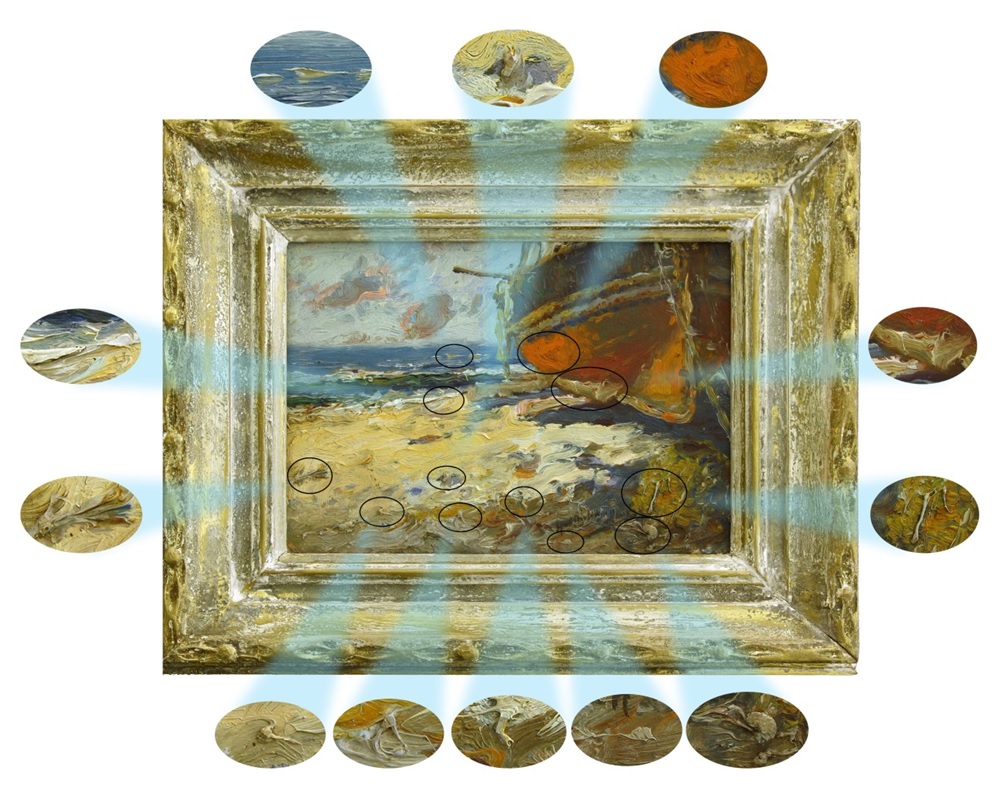
All signs/symbols appearing in the composition of this work visually interpret the poem "the Divine Comedy" since the beginning of Dante Alighieri trip to hell, passing through Purgatory, until you get to heaven, which occurs in early autumn in Europe and Modigliani made this representation through Aries on the Sun (Fig. 6), In addition to representing through various signs/symbols as skulls (Fig. 5), Snake (Fig. 8), Demon (Fig. 10), fly with corpse (Fig. 9), skull with hieroglyph (Fig. 11), Dolphin (Fig. 12), crocodile and Dragon (Fig. 13) and other, playing so, some of the stages of this certain trip through the nine circles of hell, of the seven terraces of Purgatory, or of the nine spheres of paradise, Having also included, the means of transport for Dante transit between hell and Purgatory, using the own boat, in detail in the foreground of the pictorial part and use of Purgatory to paradise, using the horse/Unicorn (Fig. 7), inserted as a hidden symbol in the center of the work.
The big challenge was to correlate all these images with their hidden meanings (La Luce Dell'Amore, 1994, p. 117-127), remembering that Modigliani was an initiate in Kabbalah and Alchemy, frequenter of seances and passionate about "the Divine Comedy", one of the greatest poetic works of all time. So, the genre "poem" is presented as an efficient mechanism of knowledge of Visual effects, in the analysis of this imagery construction.
In work of art, "The Livorno Velieri", Modigliani used a visual reading for the work, "The Divine Comedy", of Dante Alighieri, confirming the concept of Barthes, where the image can be literal or symbolic. Thus, the rhetoric of the image is given by the eloquence of the numerous symbols inserted in the pictorial. Valley report that examinations carried out through images produced with x-ray, in Spain, arise under the painting, another form of communication through some sequences of letters and numbers (Figures 14 and 15). Surely these sequences are cabalistic codes, still not deciphered.
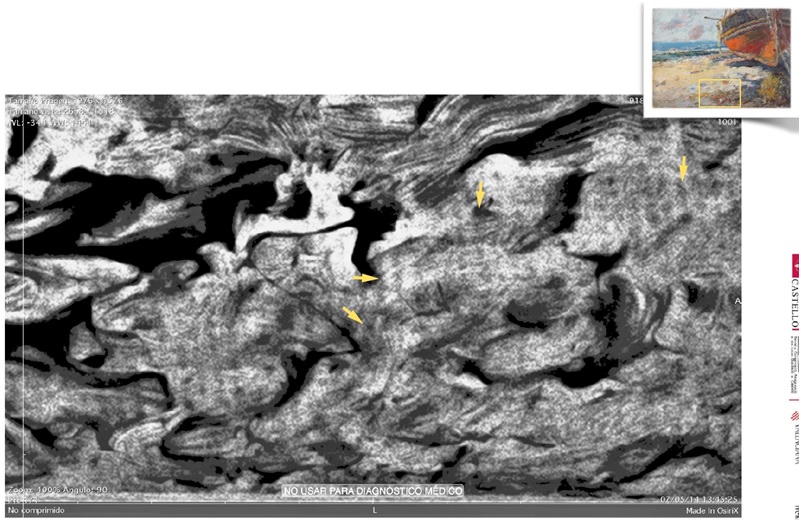
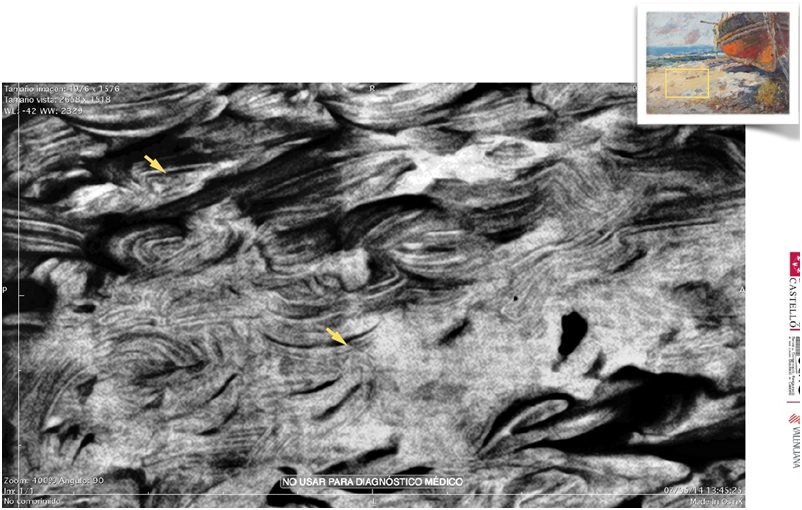
Anyway, in these two instances, There are clear intentions to communicate with people who know the poem of Dante Alighieri and the occult of Kabbalah and Alchemy, to become recipients of your messages/information.
In this work, what you propose is a reflection on the different conceptions of our existence, through the analysis of "the Divine Comedy", as well as through the proposed evolutionary teachings the Kabbalah, or by Spiritism, establishing a new communication to our current moment.
Modigliani produced a work, intentionally, with images that break the conventional aesthetic patterns, proposing a new look for the intrinsic communications in the Visual Arts, Reaffirming Luigi Pirandello, When we say in 1917; "So it is, If you think ".
I understand that can still be found other uses, especially in sequences with numbers and letters, found on the chassis of the work "the Livorno Velieri", allowing us to advance in the understanding of what has been possible to analyze so far, that is, a certain communication, as define Barthes (1984, p. 32), on the rhetorical imagery "(…) every image is polysemic, implying their significant underlying the, a ' floating ' chain of meanings, of which the reader can choose some and ignore others, ".
Sign up to receive Event News
and the Universe of Arts first!
All the cultural and ideological understanding, through images, influence directly the creation of a work of visual art under the influence of the senses, identifying in Barthes all elements to decipher the philosophical and poetic objects presented, through the figuration and the rhetoric of the image contained in the work "the Livorno Velieri", enabling understanding beyond visual communication, the various aspects imagéticos.
…
.
Liked? [highlight]Leave a comment[/highlight]!
.
References:
ROLAND BARTHES, Rhetoric of the image – The obvious and obtuse – Lisboa (Portugal): Edições 70, 1984, p. 39-40.
MIKHAIL BAKHTIN, The genres of discourse – Aesthetics of verbal creation – São Paulo (Brasil): Martins Fontes, 2003, p. 261-306.
ARTHUR PFANNSTIEL, Modigliani – Buenos Aires (Argentina): Editorial Schapire, 1943, p. 56-57 and p. 76-77.
ARTURO SCHWARTZ, La Luce Dell'Amore – Milano (Italy): Celestial Theme Edizione, 1994, p. 117-127.
ENCYCLOPAEDIA ITAÚ CULTURAL, Religious Painting.
.
ALEX RIBEIRO
São Paulo – São Paulo
Website
E-mail: [email protected]
WEBSITE obrasdarte.com:
Contemporary Artists
ArtWorks Gallery
Google + | Facebook Fan Page | Twitter

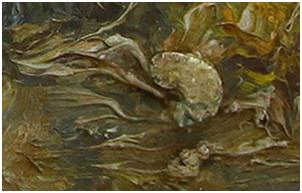

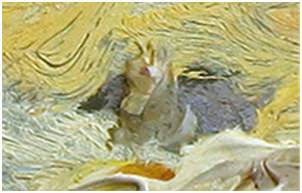
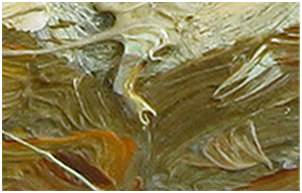
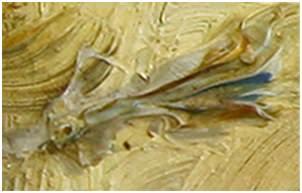
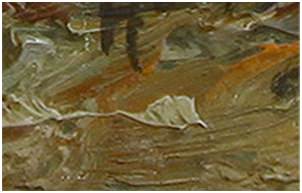
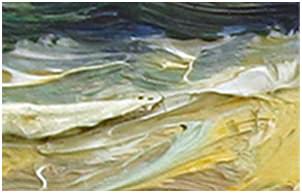
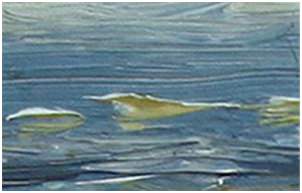
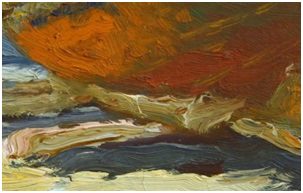
Incredible! I would never have imagined that this painting was by Modigliani if I had been shown it before. Congratulations on the discovery.